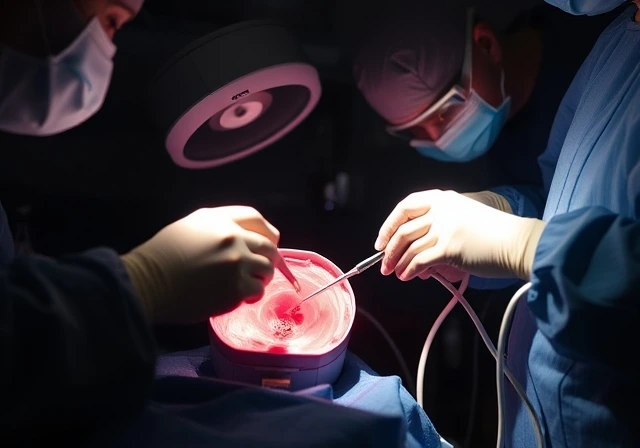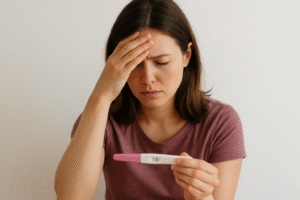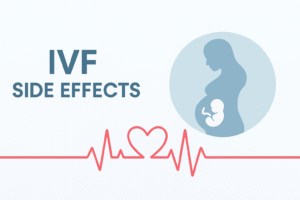A hysteroscopy is a simple, minimally invasive procedure that helps diagnose and treat different uterine issues, like unusual bleeding and other reproductive health concerns. For those considering or preparing for this procedure, understanding what to expect can provide reassurance and help you feel more at ease.
At Ova Fertility and Women Care, we specialize in personalized care and offer hysteroscopy surgery for effective diagnosis and treatment, ensuring a smooth process from preparation to recovery. Here, we’ll cover essential steps and what you should anticipate before, during, and after your hysteroscopy.
What is a Hysteroscopy?
A hysteroscopy involves using a thin, flexible tube with a light and camera, known as a hysteroscope, to examine the inside of the uterus. This procedure helps identify the reasons behind issues such as heavy menstrual bleeding, fibroids, polyps, or other abnormalities in the uterine lining. With a hysteroscope, your healthcare provider can inspect, diagnose, and, in some cases, treat uterine issues without needing open surgery.
Preparing for Your Hysteroscopy
Scheduling and Timing
One of the key aspects of preparing for your hysteroscopy is selecting the right time. We recommend scheduling your procedure when you’re not menstruating to ensure your doctor gets the clearest view of your uterine lining. This allows for a more accurate diagnosis and effective procedure.
Avoiding Tampons and Douching
Before the procedure, avoid using tampons or douches for at least 24 hours. This practice helps keep the vaginal area free of potential irritants and ensures your uterus remains in its natural state for examination.
Medication Considerations
Certain medications, like blood thinners, may need to be paused before your hysteroscopy to reduce the risk of excessive bleeding. Always follow your doctor’s guidance on which medications to avoid prior to the procedure.
Arranging Transportation
If your hysteroscopy surgery requires anesthesia or sedation, make arrangements for a friend or family member to drive you to and from the appointment, as the effects of these medications might temporarily affect your ability to drive safely.
Personal Care on the Day of Procedure
On the day of your hysteroscopy, leave personal items, such as jewelry, at home. Also, avoid perfumes, deodorants, lotions, or other skin products that may cause skin irritation or interfere with medical equipment.
What to Expect During the Hysteroscopy Procedure
Getting Comfortable for the Procedure
Upon arrival, you’ll be taken to the operation theatre, where our staff will help you settle comfortably on the surgical bed. Since a hysteroscopy is usually performed under general anesthesia, you’ll be asleep throughout the procedure, ensuring a painless experience.
Insertion of the Scope
The doctor will gently insert a speculum into your vagina to hold the walls open, making it easier to access your uterus. They will then guide a thin tube, known as the hysteroscope, through your vagina, cervix, and into your uterus.
Visualizing the Uterus
The hysteroscope is equipped with a small camera that projects real-time images of your uterine lining onto a monitor. For better visibility, a saline solution or mild gas may be introduced to slightly expand the uterus, providing a clearer view of the tissues and any openings, including the fallopian tubes.
Removing or Sampling Tissue
If your doctor detects any abnormal tissue, such as fibroids, cysts, or other growths, they may use tiny surgical instruments passed through the hysteroscope to remove them. Alternatively, a small tissue sample (biopsy) may be taken for further examination. This tissue removal is generally painless and allows for closer analysis in cases of suspected uterine issues.
What to Expect After Your Hysteroscopy
Immediate Recovery Period
A hysteroscopy usually takes about 30 to 40 minutes to complete. If you’ve been given a sedative, you’ll need some time to recover at the clinic before going home. Afterward, some women experience mild cramping or light bleeding.
Post-Procedure Activity and Self-Care
For patients who had a diagnostic hysteroscopy, normal activities can typically resume the following day. However, if polyps, fibroids, or other tissues were removed, recovery might take a few extra days, depending on the procedure’s extent. During this period, it’s essential to avoid activities like intercourse, tampon use, and swimming to allow your uterus to heal completely. Your doctor will provide you with specific guidelines tailored to your needs.
Tracking Your Period After Hysteroscopy
One common question involves the 1st period after hysteroscopy. It’s normal for your first menstrual cycle post-procedure to vary slightly in terms of timing and flow. Some patients may experience a slightly heavier period after hysteroscopy as the body recovers and readjusts.
Understanding Hysteroscopy Recovery Time
For many women, hysteroscopy recovery time is minimal. Most patients can return to daily routines within a day or two if the procedure was diagnostic. However, for more complex cases involving the removal of fibroids or polyps, you may need to allow more time for healing, generally about one to two weeks.
When to Contact Your Doctor
After your hysteroscopy, monitor your symptoms closely. Mild discomfort and spotting are normal, but notify your healthcare provider if you experience intense pain, heavy bleeding, fever, or any other concerning signs. These symptoms could indicate an infection or another issue needing prompt attention.
Conclusion
A hysteroscopy is a safe, minimally invasive procedure that provides valuable insights into uterine health and helps address conditions causing abnormal bleeding. By understanding what happens before, during, and after the procedure, you can feel more prepared and at ease with your care journey. At Ova Fertility and Women Care, our experienced team is here to support you through every step, prioritizing your comfort and well-being.
For more information or to schedule your hysteroscopy surgery, reach out to us at Ova Fertility and Women Care.












 No need to worry, your data is 100% Safe with us!
No need to worry, your data is 100% Safe with us!